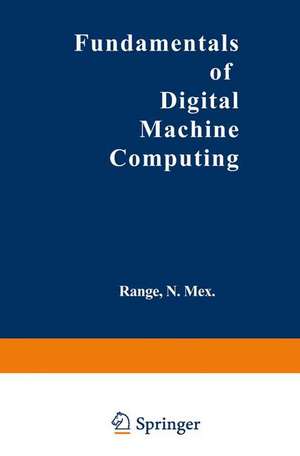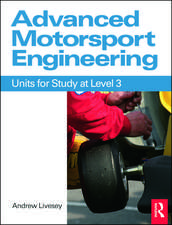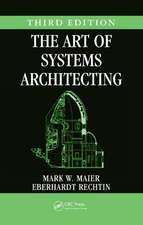Fundamentals of Digital Machine Computing
Autor G. Hintzede Limba Germană Paperback – 12 iun 2012
Preț: 317.90 lei
Nou
Puncte Express: 477
Preț estimativ în valută:
60.85€ • 66.12$ • 51.15£
60.85€ • 66.12$ • 51.15£
Carte tipărită la comandă
Livrare economică 21 aprilie-05 mai
Preluare comenzi: 021 569.72.76
Specificații
ISBN-13: 9783642490316
ISBN-10: 364249031X
Pagini: 240
Ilustrații: IX, 225 S.
Dimensiuni: 152 x 229 x 13 mm
Greutate: 0.33 kg
Ediția:Softcover reprint of the original 1st ed. 1966
Editura: Springer Berlin, Heidelberg
Colecția Springer
Locul publicării:Berlin, Heidelberg, Germany
ISBN-10: 364249031X
Pagini: 240
Ilustrații: IX, 225 S.
Dimensiuni: 152 x 229 x 13 mm
Greutate: 0.33 kg
Ediția:Softcover reprint of the original 1st ed. 1966
Editura: Springer Berlin, Heidelberg
Colecția Springer
Locul publicării:Berlin, Heidelberg, Germany
Public țintă
ResearchCuprins
1 The Role and Principal Attributes of Digital Computers.- 1-1. The Universality of Digital Computers.- 1-2. Digital Computers as Logical Machines.- 1-3. Large Memory Capacity.- 1-4. Computational Rapidity.- 1-5. General Systems Configuration.- 1-6. The Computer Family Tree.- 2 Binary Numbers and Codes and their Machine Representation.- 2-1. The Binary Number System.- 2-2. The Octal System as Bridge between Decimal and Binary.- 2-3. Number Conversion.- 2-4. Binary Codes.- 2-5. Representation of Negative Numbers.- 2-6. Fixed Point Number Ranges.- 2-7. Scale Factoring.- 2-8. Floating Point Numbers.- 2-9. Initial Computer Input.- 3 The Principles of Logic in Computers.- 3-1. Relationship of Logical Concepts to Computer Circuits.- 3-2. Boolean Algebra as Symbolic Logic.- 3-3. Some Useful Theorems of Boolean Algebra.- 3-4. Basic Elements of the Computer.- 3-5. Logical Description of Basic Elements.- 3-6. Minimization of Logical Functions.- 3-7. Logical Synthesis of Combinational Circuits.- 3-8. Logical Analysis of Combinational Circuits.- 3-9. The Logic of Combinational Circuits with Several Outputs.- 3-10. Logical Synthesis of Sequential Circuits.- 3-11. Design of an Odd-Sequence Counter.- 3-12. The Logic of the Entire Computer.- 4 Arithmetic Operations of the Machine.- 4-1. The Logic of Binary Addition and Subtraction.- 4-2. Serial and Parallel Binary Addition.- 4-3. Addition with Accumulators.- 4-4. Machine Subtraction.- 4-5. BCD Addition and Complementation.- 4-6. Considerations for Machine Multiplication.- 4-7. Serial Binary Multiplication.- 4-8. Parallel Binary Multiplication.- 4-9. BCD Multiplication.- 4-10. Considerations for Machine Division.- 5 The Instruction Code of the Computer.- 5-1. Basic Computer Operations.- 5-2. Instruction Format.- 5-3. Coding of Instructions.- 5-4. General Classes of Instructions.- 5-5. Operational Instructions.- 5-6. Control Instructions.- 5-7. Instruction Modification.- 5-8. Editing Instructions.- 5-9. Instruction Execution.- 6 Principles and Examples of Programming.- 6-1. Mathematical Methods for Digital Computers.- 6-2. Diagramming the Program.- 6-3. Writing the Code.- 6-4. Simple Arithmetic Problems.- 6-5. Iterative Processes.- 6-6. Polynomial Evaluation.- 6-7. Solution of Simultaneous Linear Equations.- 6-8. Matrix Operations.- 6-9. Searching and Sorting.- 6-10. Numerical Solution of Differential Equations.- 6-11. A Complete Program for a Rocket Trajectory.- 7 Automatic Programming.- 7-1. Meaning of Automatic Programming.- 7-2. Principles of Language Design.- 7-3. The Structure of ALGOL.- 7-4. Basic Considerations for Compilers.- 7-5. The IT Compiler.- 7-6. The Listing Process.- 7-7. The Decomposition Process.- 7-8. Compiler Summary.- Appendix A. Summary of Instructions by Alphabetic Code.- Appendix B. Powers of Two.- List of References.










